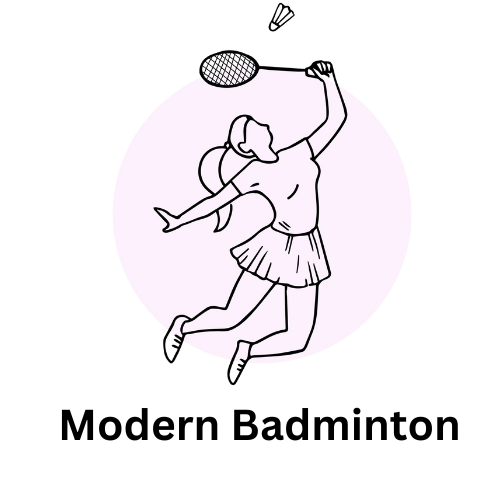
Introduction: The Importance of Flexibility in Badminton
Flexibility is a key factor in badminton. It helps players move quickly and reach for shots with ease. Let’s explore why flexibility is so important in badminton.
- The role of flexibility in badminton performance: Flexibility allows players to stretch and bend their bodies. This helps them hit the shuttlecock from different angles. A flexible player can move faster on the court. They can also make powerful shots. Flexibility improves overall performance in the game.
- How flexibility can prevent badminton injuries: Flexibility helps prevent injuries. When muscles are flexible, they are less likely to tear. Stretching before and after games keeps muscles loose. This reduces the risk of strains and sprains. Flexibility also helps joints move smoothly. This can prevent joint injuries.
In summary, flexibility is crucial for both performance and safety in badminton. Players should focus on improving their flexibility to excel in the game and stay injury-free.
Understanding Badminton Injuries
Common Badminton Injuries
- Ankle SprainsAnkle sprains are very common in badminton. They happen when you twist or turn your ankle in an awkward way. This can stretch or tear the ligaments that hold your ankle bones together. Ankle sprains can cause pain, swelling, and difficulty walking.
According to a study, ankle sprains account for about 20% of all badminton injuries. It’s important to wear proper shoes and do ankle-strengthening exercises to prevent these injuries.
- Shoulder InjuriesShoulder injuries often occur due to the repetitive overhead motions in badminton. These injuries can include rotator cuff tears, shoulder impingement, and tendonitis. Symptoms may include pain, weakness, and reduced range of motion.
Experts suggest that shoulder injuries make up around 15% of badminton injuries. Regular shoulder exercises and proper technique can help reduce the risk.
- Knee InjuriesKnee injuries in badminton can be caused by sudden stops, jumps, and changes in direction. Common knee injuries include ligament tears, meniscus injuries, and patellar tendonitis. These injuries can lead to pain, swelling, and instability in the knee.
Studies show that knee injuries represent about 10% of all badminton injuries. Strengthening the muscles around the knee and using proper techniques can help prevent these injuries.
Causes of Badminton Injuries
- Improper warm-up: Warming up is crucial before playing badminton. Without a proper warm-up, your muscles are not ready for intense activity. This can lead to injuries like muscle strains and sprains. A good warm-up increases blood flow and prepares your body for the game.
- Lack of flexibility: Flexibility is important in badminton. If your muscles are tight, you are more likely to get injured. Stretching exercises help improve flexibility. This can prevent injuries like pulled muscles and joint pain. Regular stretching keeps your muscles loose and ready for action.
- Overuse and fatigue: Playing badminton for long periods without rest can cause overuse injuries. These include tendonitis and stress fractures. Fatigue makes your muscles weak and more prone to injury. It is important to take breaks and listen to your body. Rest and recovery are key to preventing overuse injuries.
Flexibility Exercises for Badminton
Stretching Routines for Badminton Players
-
- Dynamic Stretching
Dynamic stretching involves moving parts of your body and gradually increasing reach, speed, or both. This type of stretching helps improve your range of motion and prepares your muscles for the game. Examples include leg swings and arm circles.
-
- Static Stretching
Static stretching involves holding a stretch for a set period, usually between 15 to 60 seconds. This helps lengthen your muscles and increase flexibility. Common static stretches for badminton players include hamstring stretches and calf stretches.
-
- PNF Stretching
PNF (Proprioceptive Neuromuscular Facilitation) stretching is a more advanced form of flexibility training. It combines passive stretching and isometric contractions. This method can significantly increase your range of motion. An example is the contract-relax stretch for the hamstrings.
Flexibility Drills for Badminton
Flexibility is key for badminton players. It helps you move quickly and reach for shots. Here are some drills to improve your flexibility:
- Lunges: Lunges help stretch your legs and hips. Stand straight, then step one foot forward. Bend both knees until your back knee almost touches the ground. Hold for a few seconds, then switch legs. Repeat 10 times for each leg.
- Leg Swings: Leg swings loosen up your hips and legs. Stand next to a wall for balance. Swing one leg forward and backward in a controlled motion. Do this 10 times, then switch legs. You can also swing your leg side to side.
- Arm Circles: Arm circles are great for your shoulders. Stand with your feet shoulder-width apart. Extend your arms out to the sides. Make small circles with your arms, gradually making them bigger. Do 10 circles forward, then 10 circles backward.
These drills will help you stay flexible and avoid injuries. Make them a part of your regular training routine.
| Drill | Target Area | Repetitions |
|---|---|---|
| Lunges | Legs and Hips | 10 per leg |
| Leg Swings | Hips and Legs | 10 per leg |
| Arm Circles | Shoulders | 10 forward, 10 backward |
Remember, flexibility drills are just as important as strength training. They keep your muscles loose and ready for action. Happy training!
Badminton Warm-Up Exercises
Warming up before playing badminton is very important. It helps to prepare your body and reduce the risk of injuries. Here are some great warm-up exercises you can do:
- Jogging: Start with a light jog for about 5-10 minutes. Jogging increases your heart rate and warms up your muscles. It gets your blood flowing and prepares your body for more intense activities.
- Skipping: Skipping is another excellent warm-up exercise. It helps to improve your footwork and coordination. Try skipping for 3-5 minutes. It also strengthens your legs and improves your agility.
- Shadow Badminton: This exercise involves mimicking badminton movements without a shuttlecock. Practice your swings, footwork, and shots. Shadow badminton helps to improve your technique and gets your muscles ready for the game.
These exercises are simple but very effective. They help to make sure your body is ready for the game. Remember, a good warm-up can make a big difference in your performance and help prevent injuries.
| Exercise | Duration | Benefits |
|---|---|---|
| Jogging | 5-10 minutes | Increases heart rate, warms up muscles |
| Skipping | 3-5 minutes | Improves footwork, strengthens legs |
| Shadow Badminton | 5-10 minutes | Improves technique, prepares muscles |
Flexibility Training for Athletes
Benefits of Flexibility Training
- Improved performance: Flexibility training helps athletes move more easily. When your muscles are flexible, you can perform better. For example, in badminton, you can reach for the shuttlecock faster and with more precision.
- Reduced injury risk: Stretching and flexibility exercises make your muscles less tight. This means you are less likely to get hurt. Studies show that athletes who stretch regularly have fewer injuries.
- Better posture and balance: Flexibility training helps you stand and move correctly. Good posture and balance are important for all sports. They help you stay strong and avoid falls.
| Benefit | Details |
|---|---|
| Improved Performance | Helps athletes move more easily and perform better. |
| Reduced Injury Risk | Makes muscles less tight, reducing the chance of getting hurt. |
| Better Posture and Balance | Helps maintain correct posture and balance, important for all sports. |
Implementing Flexibility Training in Your Routine
Adding flexibility training to your routine can make a big difference. Here are some tips to help you get started:
- Consistency is key: To see real improvement, you need to stretch regularly. Aim to include flexibility exercises in your routine at least three times a week. Over time, you will notice your muscles becoming more flexible.
- Don’t rush the process: Flexibility takes time to develop. Avoid pushing yourself too hard, as this can lead to injuries. Instead, focus on gradual progress. Hold each stretch for about 20-30 seconds and repeat it a few times.
- Listen to your body: Pay attention to how your body feels during and after stretching. If you feel pain, stop immediately. Stretching should feel good, not painful. Adjust your stretches to match your comfort level.
Remember, flexibility training is a journey. Stay patient and keep practicing. Your body will thank you!
Preventing Sports Injuries in Badminton
Badminton Injury Prevention Tips
- Proper equipment: Using the right equipment is crucial. Make sure your racket is the correct size and weight for you. Wear shoes that provide good support and grip. This helps prevent slips and falls.
- Rest and recovery: Your body needs time to heal. Take breaks between games and ensure you get enough sleep. Overworking your muscles can lead to injuries.
- Strength and conditioning: Regular exercise strengthens your muscles and joints. Focus on exercises that improve your flexibility and balance. This makes your body more resilient to injuries.
| Tip | Why It’s Important |
|---|---|
| Proper equipment | Prevents slips and falls |
| Rest and recovery | Allows muscles to heal |
| Strength and conditioning | Makes body resilient to injuries |
Reducing Injury Risk in Badminton
- Proper techniqueUsing the right technique is key to staying safe in badminton. Make sure to learn the correct way to swing your racket and move on the court. This helps avoid strains and sprains. Coaches can teach you the best techniques to keep you injury-free.
- Regular check-upsSeeing a doctor regularly can help catch any issues before they become serious. Regular check-ups ensure that your body is in good shape to play. Doctors can spot problems early and give advice to keep you healthy.
- Healthy diet and hydrationEating the right foods and drinking enough water is important. A balanced diet gives you the energy to play your best. Staying hydrated helps your muscles work well and reduces the risk of cramps and injuries.
| Tip | Benefit |
|---|---|
| Proper technique | Reduces strains and sprains |
| Regular check-ups | Early detection of issues |
| Healthy diet and hydration | Better energy and muscle function |
Conclusion: Embrace the Power of Flexibility
-
Recap of the Importance of Flexibility in Badminton
Flexibility is key in badminton. It helps you move quickly and reach for shots. Good flexibility can also prevent injuries. When your muscles are flexible, they can handle the fast movements in badminton better.
Keep in mind, flexibility is not just for professional players. Everyone can benefit from it. Whether you play for fun or in competitions, being flexible will improve your game.
-
Final Thoughts and Encouragement
Flexibility takes time and effort. But the rewards are worth it. You will play better and feel better. Start with simple exercises and gradually increase your flexibility.
Keep practicing and stay consistent. Your hard work will pay off. Embrace the power of flexibility and see the difference it makes in your badminton game.
| Benefits of Flexibility | How to Achieve |
|---|---|
| Improved Performance | Regular stretching exercises |
| Injury Prevention | Proper warm-ups and cool-downs |
| Better Movement | Consistent practice and training |
